Millennial Workforce Shunning the ‘Burbs? How Some Leading Corporations Are Reacting

From Wilmington, DE, comes news of Chemours, a major chemicals company spun off from DuPont about 18 months ago, choosing to remain in the city.
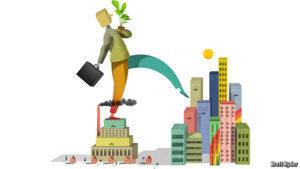 GE is relocating its world HQ from Fairfield, CT, to the Seaport District of downtown Boston. McDonald’s is moving its long-time Oak Brook, IL, HQ to downtown Chicago. Marriott is relocating its world HQ from a suburban Montgomery County, MD, location to downtown Bethesda.
GE is relocating its world HQ from Fairfield, CT, to the Seaport District of downtown Boston. McDonald’s is moving its long-time Oak Brook, IL, HQ to downtown Chicago. Marriott is relocating its world HQ from a suburban Montgomery County, MD, location to downtown Bethesda.
Rock Ventures, which owns Quicken Loans, consolidated from several suburban locations rimming Detroit to the heart of the downtown, Woodward Ave, back in 2010. Biogen moved from Cambridge, MA, to the Boston suburbs in 2011 only to return a year later. (Ouch; expensive!)
Mark Vergnano, CEO of Chemours, nails it when talking with reporter Nelson Schwartz back in August: “We are going through a change in our work force, and we wanted to be where we could attract millennials. This is a group that likes to be in an urban setting, with access to public transportation. They don’t want to be confined to a building with a cafeteria or be next door to a shopping center.” Motorola Solutions’ CEO Greg Brown notes: “When we post jobs downtown, we get four or five times the response.”
Jeffrey Immelt, GE CEO, imagines: “…we want to be at the center of an ecosystem that shares our aspiration.”
“But the trend [of relocating to cities] represents the deconstruction and disaggregation of the traditional corporate headquarters,” says Harvard Business School professor David Collis. “The executive suite might be downtown, but you could have the back office and administrative functions in Colorado, the finance guys in Switzerland and the tax team in the U.K,” he told Schwartz.
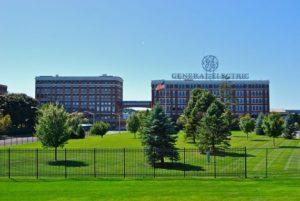 GE is shedding fenced parking lots and security gates at its suburban location for a downtown Boston location that will feature a museum and exhibits of leading-edge technology, such as 3-D printing.
GE is shedding fenced parking lots and security gates at its suburban location for a downtown Boston location that will feature a museum and exhibits of leading-edge technology, such as 3-D printing.
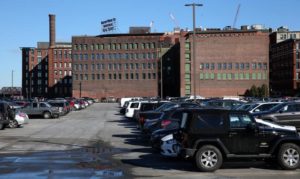
Mindful of the pave-over initiated in Fairfield when building its HQ there years ago, here are before/after images of what it’s doing in downtown Boston.

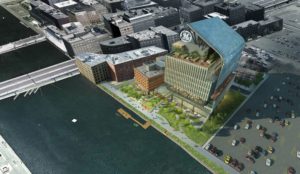 Among bragging rights will be the “solar veil” along the south facade of the new 12-story HQ building–rising from mid-point along the curtain wall, protecting it like a veil from the sun’s heat load, then bending over the roofline where a solar PV system becomes integrated to maximize the kW capture. This signature design is a cred for Gensler’s architectural creativity, engineering know-how and sustainability commitment. The latest, most rigorous version of the LEED voluntary rating system, called v4, will be utilized.
Among bragging rights will be the “solar veil” along the south facade of the new 12-story HQ building–rising from mid-point along the curtain wall, protecting it like a veil from the sun’s heat load, then bending over the roofline where a solar PV system becomes integrated to maximize the kW capture. This signature design is a cred for Gensler’s architectural creativity, engineering know-how and sustainability commitment. The latest, most rigorous version of the LEED voluntary rating system, called v4, will be utilized.
What it will not include is a parking garage, also a green building boasting point. For the +800 employees relocating from Fairfield, there will only be 30 parking spaces on site. The schematic labels some of the green features of the proposed building.
At ground level will be a bistro, “external makerspace,” an electric vehicle charging station, a community work lounge and the museum. The existing Harborwalk will be expanded, and surely bicycle storage will be handy for visitors, and perhaps in the building for employees.
What’s a makerspace? “Makerspaces are community centers with tools,” according to the website by the same name. “[They] combine manufacturing equipment, community, and education for the purposes of enabling community members to design, prototype and create manufactured works that wouldn’t be possible to create with the resources available to individuals working alone.
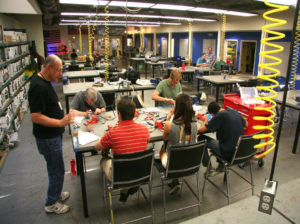 Among others sharing these spaces and tools are for- and non-profit organizations and school- or library-affiliated groups. “All are…unique in exactly how they are arranged to fit the purposes of the community they serve.”
Among others sharing these spaces and tools are for- and non-profit organizations and school- or library-affiliated groups. “All are…unique in exactly how they are arranged to fit the purposes of the community they serve.”
This sort of thing wouldn’t work in a Fairfield HQ, but its emblematic of cities where noticeable details of streetscape identity/placemaker marketing and maintenance are burnished.
.
P.S. Just last week I published two posts about a “living building” you won’t likely find in the ‘burbs (not yet, anyway).